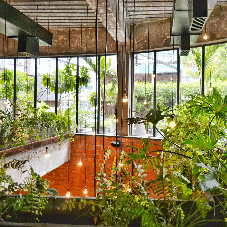As one former schools minister once said: “If you get the toilets right, you get the teaching right.” Whilst this might seem an overstatement, many believe that clean, well-designed school washrooms can discourage anti-social behaviour and prevent the physical and psychological problems associated with ‘toilet avoidance’ by pupils, either because facilities are dirty or a haven for bullies. Andrew Taylor of Maxwood Washrooms examines the key design requirements for making better school washrooms.
All children should have access to safe, hygienic toilets when they are at school, whatever their age. Lack of privacy, vandalism, dingy décor, and inadequate cleaning and maintenance are just some of the issues that can make a visit to the school toilets an unpleasant and unhealthy experience for pupils. Washroom design, including colour scheme and layout, can play an important part in creating facilities that are attractive, functional, and encourage respect from users.
Legislation and Standards
As a starting point, it’s important to consult the legislation and standards governing the design of washrooms in education establishments. Current standards for schools and colleges maintained by a local authority are contained in the Education (School Premises) Regulations 1999, and for independent schools in Part 5 of The Education (Independent Schools Standards) Regulations 2010.
For providers of post-16 education, the current Disability Discrimination Act (DDA) requires that reasonable steps are taken to prevent a disabled person from being placed at a substantial disadvantage. For washrooms this can include access to the cubicle, toilet pan height and provision of grab rails. DDA regulations also need to be considered in the selection of colour and finish in terms of the LRV (light reflectance value). There should be sufficient visual contrast to ensure visually impaired people can easily distinguish between different areas of the washroom, such as door frames to walls and sanitary fittings to walls, by virtue of the difference in light reflecting from the surface.
Another useful source for good practice ideas is Bog Standard, a campaign which aims to promote better toilets for pupils run by ERIC (Education and Resources for Improving Childhood Continence). According the to the Bog Standard website, a quarter of children in England’s schools avoid using the toilets because they are dirty, old and smelly. So, despite recent investment programmes it seems there is clearly room for improvement.
Having looked at the regulations, let’s consider some of the specific needs of different age groups when it comes to school washroom design.
Primary Schools
For younger children school architecture, including the washroom design, has to be approachable and appealing to allow the right mix of caring and control. When specifying toilet cubicles for primary schools these should provide the right degree of privacy whilst allowing appropriate adult supervision. Getting the detailing right can make a significant difference. For example, rather than taking a ‘one size fits all’ approach where different washrooms are provided for different age groups consider a variety of cubicle door heights ranging from 1350mm to 1600mm. Also, for ease of use by younger children consider swing-open or swing-closed doors, and the option of magnetic door catches instead of indicator bolts. And to avoid injuries to little fingers, specify no-finger-trap fixings in cubicles.

Secondary Schools
For this older age group washrooms need to be both robust and attractive. Washroom design has to earn the respect of the majority of children whilst being able to withstand abuse by the minority. Although cubicles have to provide visual and aural privacy, all other areas of the washroom should be as open as possible to facilitate unobtrusive adult supervision to help reduce bullying and anti-social behaviour. Incorporating urinal privacy screens should be another consideration for secondary school washrooms. Cubicle door height can be varied from 1600mm to 1950mm if washrooms are designated by age group. Specifying tamper-proof service access panels in wall panels can also be a worthwhile investment if deliberate damage is likely to be a problem.

Style and Functionality
When it comes to colours and styling, experience in this sector suggests that contemporary bold designs and colours are more likely to encourage the respect of the majority of users. There are many design options aimed at younger children such as distinctively shaped cubicle doors and dividing panels, coloured profile pilasters (uprights) and bright, cheerful screen printed laminate designs for doors, walls, vanity units and other washroom fixtures. Bespoke print patterns can become available as no-cost options for projects with a total production run of 30 cubicles or more.
As far as functionality is concerned, modern laminates provide hygienic, easy to clean option for cubicle doors and other surfaces. All fittings should, of course, be water-resistant. Where there is an increased risk of careless use or deliberate vandalism, choose durable metal hardware, such as polished aluminium, which offers increased strength and corrosion resistance. SGL (solid grade laminate) is the preferred material for cubicles subject to high use, and possible abuse. This high performance material is extremely resilient to knocks and bumps, and being impervious to water is easily washed down to help maintain high standards of hygiene.
Whether you are designing a new washroom or refurbishing an existing toilet facility, selecting the most suitable products for the age group concerned can make a positive difference, not just to the children who use the facilities but to the overall performance of the school or college.
This is a guest post by Andrew Taylor of Maxwood Washrooms, specialist washroom manufacturers.














